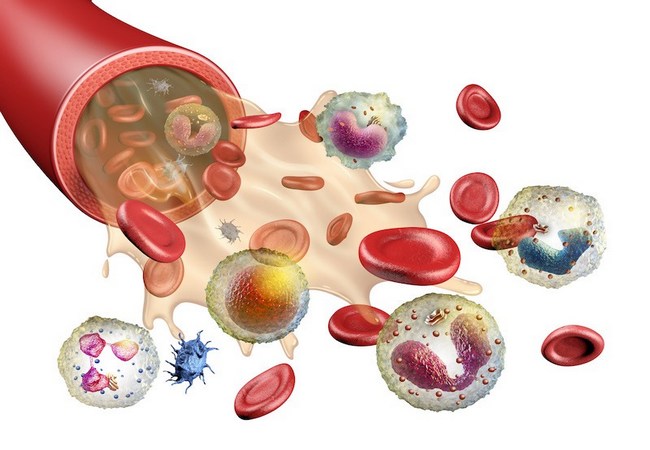What is Blood?

Characteristics of Blood:
There are some key characteristics of blood which are listed below:
- Color: Red (Due to hemoglobin).
- Volume: The average volume of blood in a normal adult is 5L.
- pH: 7.4
- Specific gravity: of total blood is 1.052 to 1.061
- Viscosity: Blood is generally 5 times more viscous than water.
Main Functions of Blood:
Blood performs several functions as follows-
1. Transportation or Distribution:
It includes-
- Transport of oxygen from the lungs to the tissues and carbon dioxide from the tissues to the lungs.
- Transport of nutrients absorbed by the digestive tract to all the body cells.
- Transport of metabolic waste products to the kidneys, lung, skin, and intestines for removal.
- Transport of hormones from the endocrine glands to their target organs and tissues.
- Transport of enzymes.
2. Regulation:
It includes-
- Maintenance of normal pH (acid-base balance) in the body tissues.
- Maintenance of appropriate body temperature.
- Maintenance of body fluid or water content of the body.
- Regulation of blood pressure.
- Regulation of colloidal osmotic pressure.
3. Protection:
It includes-
- Prevention of infection by the WBC and circulating antibodies.
- Prevention of blood loss by initiating coagulation when blood is damaged.
Compositions of blood or plasma have presented in the below:
Whole blood consists of formed elements (45%) and plasma (55%).
1. Formed Elements (45%):
It includes-
- Red blood cells (RBC) or Erythrocytes,
- White blood cells (WBC) or leukocytes,
- Platelets.
It includes-
- Neutrophils (60-70%),
- Eosinophil (2-4%),
- Basophils (0-15%),
- Lymphocytes (20-25%),
- Monocytes (3-8%).
2. Plasma (55%):
It includes-
- Solids (10%): Organic electrolytes and inorganic electrolytes.
- Water (90%),
- Gases: Oxygen, carbon dioxide, and nitrogen.
Organic Electrolytes:
It includes-
- Proteins: Albumin, globulin and fibrinogen.
- Nutrients: Glucose, amino acids, fatty acids, glycerol, triglycerides, cholesterol, and vitamins.
- Non-protein Nitrogenous Substances: Urea, uric acid, creatine, creatinine, ammonium, and xanthine.
- Others: Metabolic enzymes, antibodies, complement, and hormones.
Inorganic Electrolytes:
It includes-
- Cations: Na+, k+, ca++, Mg++,
- Anions: Cl-.
More questions related to this article:
- What do you mean by blood?
- Define blood.
- What are the characteristics of blood?
- Mention the key properties of blood.
- What are the functions of blood?
- Discuss all the functions of blood.
- What are the compositions of blood?
- Write down the compositions of blood.
- Write a short note on blood.

Maria Khatun Mona is a Founder and Editor of Nursing Exercise Blog. She is a Nursing and Midwifery Expert. Currently she is working as a Registered Nurse at Evercare Hospital, Dhaka, Bangladesh. She has great passion in writing different articles on Nursing and Midwifery. Mail her at “maria.mona023@gmail.com”
